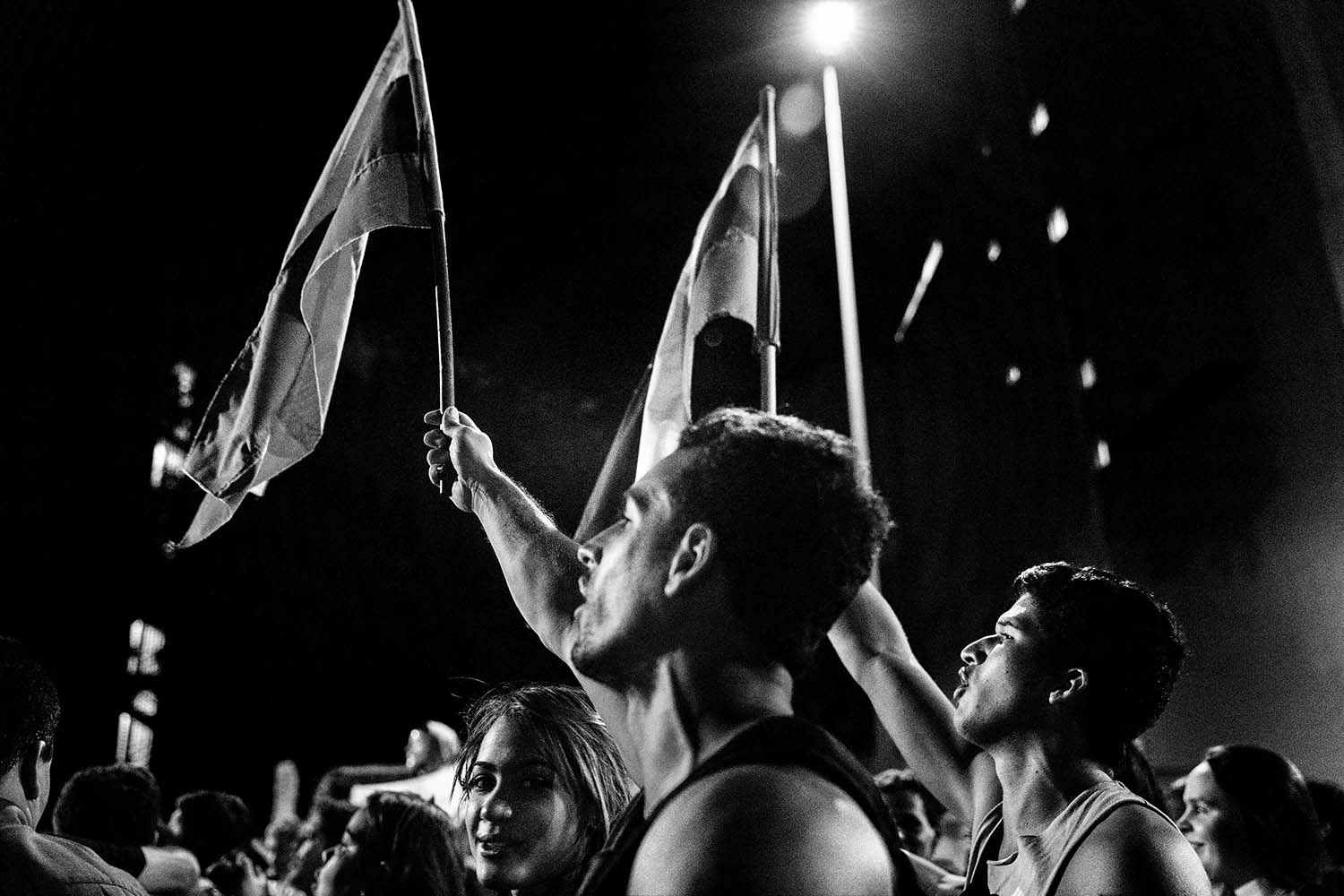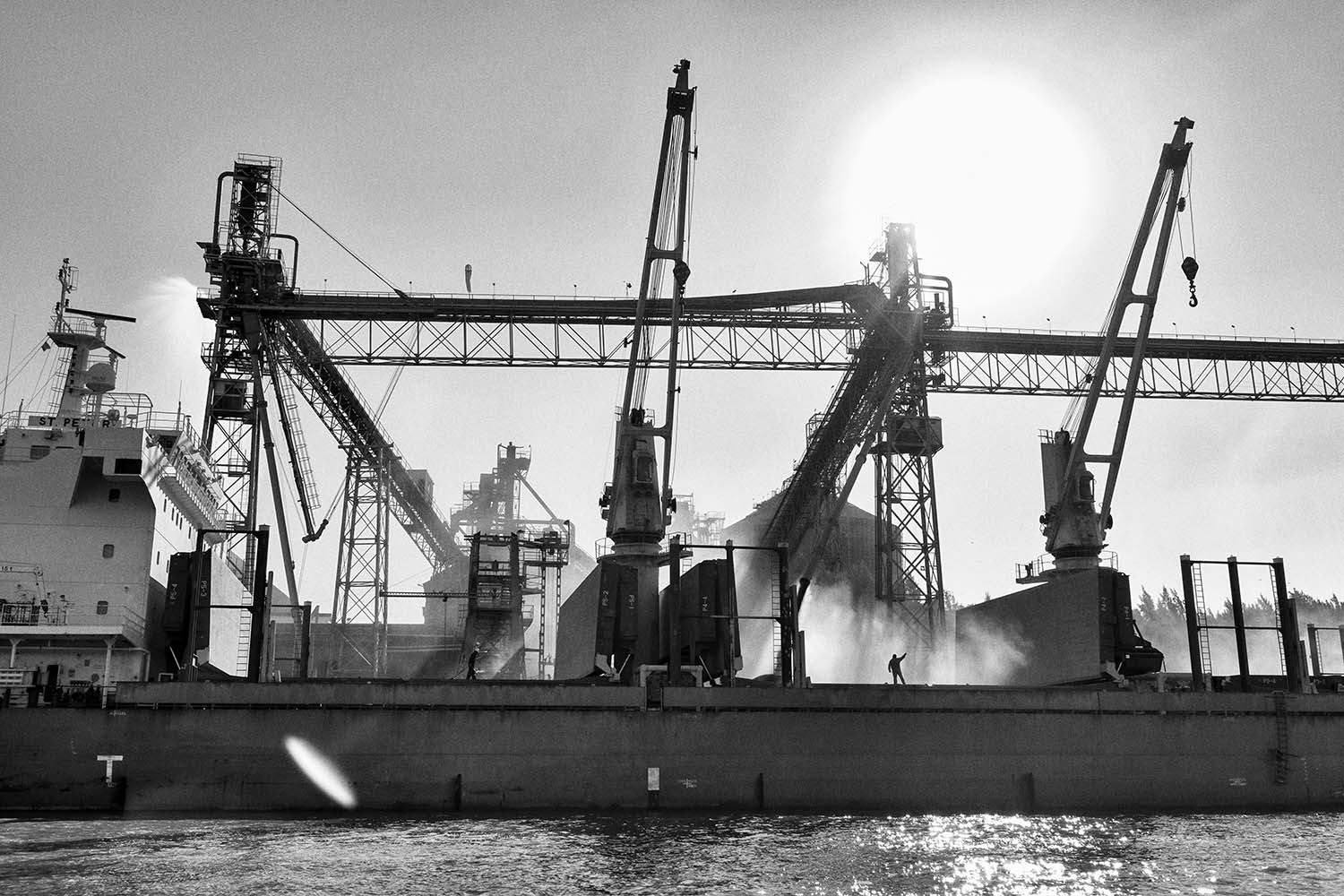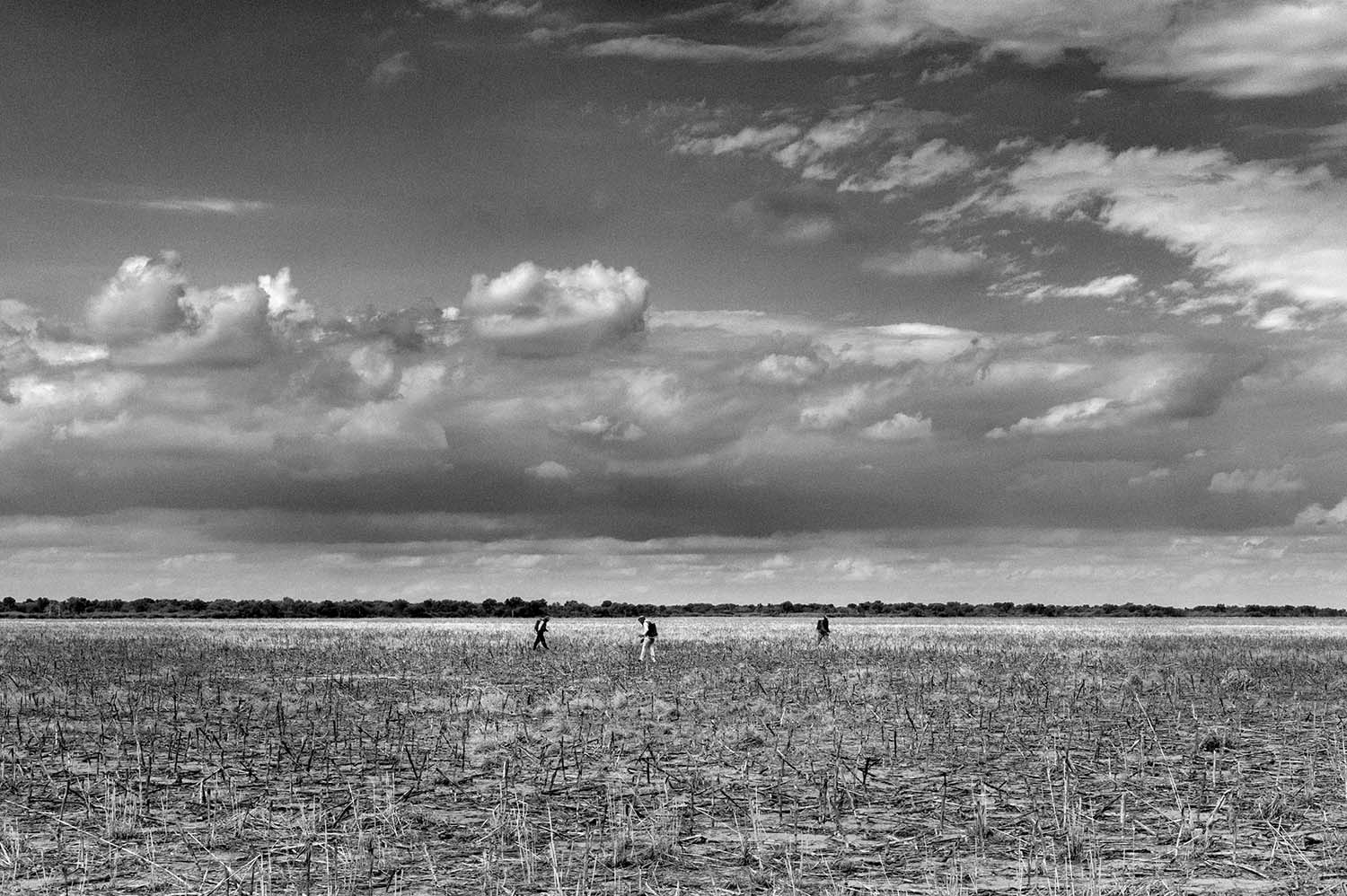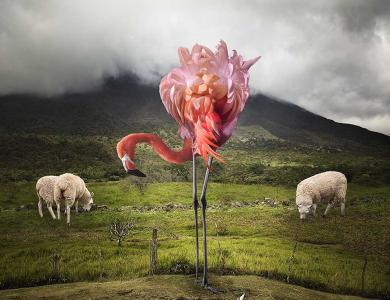
© Alvaro Ybarra Zavala - CARACAS, VENEZUELA - DECEMBER 2015: Followers opponents Nicolas Maduro's government celebrated the electoral victory of the Venezuelan opposition. In the photograph, the followers of the Venezuelan opposition, sing the national anthem in front of the headquarters of the MUD (Democractic Unity Roundtable). The elections to the National Assembly are considered by the opposition as a historic opportunity to begin the political change in Venezuela. The elections were held on December 6 marked a historic day in the country. The MUD (Democratic Unity Roundtable) won the elections with an absolute majority. An election result that even the late President Chavez accomplished during his political career.
The only formal training Alvaro Ybarra Zavala ever received as a photojournalist was when he participated in the 2010 Joop Swart Masterclass, organized by World Press Photo. Prior to this, it was his grandfather’s guidance and his deep desire to document the contradictory facets of human behaviour, which drove him into the profession.
Blink’s Kyla Woods spoke to Alvaro about his work in Venezuela, his upcoming book “1984”, as well as the process behind developing one of his more provocative reportages, “Stories of a Wounded Land.”
KW: What got you interested in covering Venezuela?
AZ: It started in 2004 for a small assignment on the Bolivarian revolution. I started photographing daily lives in the Venezuelan society. From the moment I got there, I gained access to the political movement of Chavismo. One thing led to another and as I gained more access, the more I started seeing the other face of the Chavismo.
KW: Is '1984' about the Bolivarian Revolution?
AZ: '1984' documents the legacy left by President Hugo Chávez Frías and his Bolivarian Revolution. A legacy which questions the feasibility of an inspiring project for the most disadvantaged parts of Latin America, which ultimately also became an authoritarian regime, responsible for the systematic violation of human rights of the Venezuelan Society.
In the last 14 years, many international bodies have accused the Bolivarian Government of having used the Security Forces or the Pro-government armed groups to enforce its policies. Practices such as the lack of procedural safeguards and judicial independence, restrictions on freedom of speech, the persecution of human rights activists, political discrimination and the government interference in labour and electoral laws have been denounced by these bodies during this 14-year period.
A project which depicts this reality following the script of George Orwell’s 1984. A synonym at the time of portraying governments that duplicate totalitarian and repressive attitudes, as those depicted in the novel.
A large majority of Latin America considers the Bolivarian Revolution to be a great opportunity for change. The dream of a fair and free Latin America, offering more opportunities for individuals, irrespective of their roots, meant a revolution for a society which only knew armed struggle as a failed attempt to change. Chavez wished to change society from society itself, and everybody was part of the change - the ultimate expression of democracy.
However, time made us wake from a dream. The revolution has become its worst enemy and turned into a totalitarian revolution.
With 1984, I am trying to document a great lost opportunity brought by a government which has made of the systematic violation of human rights its idiosyncrasy. A project depicting today’s Venezuela, where Civil Society lives under the yoke of fear and nobody, neither the government nor the opposition, offers a true alternative of democracy and change for Venezuelan Society.

© Alvaro Ybarra Zavala - NAPENAY, CHACO, ARGENTINA - NOVEMBER 2012: Sebastian, 14, in the arms of his aunt outside his house. He suffers from hydrocephalus and myelomeningocele. His grandmother, Matrona, is the matriarch of the family. He lives with his grandfather, his uncles and his cousin Matias, completely surrounded by crops that are constantly fumigated with glyphosate and methamidophos calibre 25, a phosphorous-based chemical prohibited by the Stockholm convention. The Napenay community is constantly affected by spraying of agrochemicals from aircrafts and spraying machines which do not abide by the legislation in force, and act in complete impunity and with the consent of the authorities. The products used for the spraying are glyphosate, 2.4 D, endosulfan and chlorpyrifos. (Photo by Alvaro Ybarra Zavala/Reportage by Getty Images)
KW: You spoke about Venezuela having an authoritarian regime, how does this affect your work?
AZ: We, photojournalists working in Venezuela, are aware that the government follows us very closely. They monitor everything and implement censorship on your work which puts you on their radar and you become a target. Venezuela has a history of implementing media censorship and to date, there is no independent media except for El Nacional and other online media outlets that speak against the revolution. However, if you are on the government’s radar, you become a potential target of los colectivos as well, which are the radical followers of Bolivarian revolution.
The colectivos are the left wing paramilitary of the revolution. They control the streets, the cities and are responsible for most of the crime in Venezuela. You are never safe while working in one of the most violent countries of the world.
KW: So you are always dealing with potentially dangerous situations when you photograph?
AZ: Venezuela is probably the most dangerous place I have ever worked, even worse than Iraq.
Here, you take high risks on a regular basis to take any kind of photograph. Insecurity from a political point of view is really high. If you are on the black list, you are in trouble with the government.

© Alvaro Ybarra Zavala - MATO GROSSO, BRASIL - JULY 2013: aerial picture near SINOP shows the fragile border that exists between arable and forest land in the expansion of agricultural lands in Brazil. (Photo by Alvaro Ybarra Zavala/ Reportage by Getty Images)
KW: How long did it take you to navigate through the area and build a strong network of people that you can trust?
AZ: At the moment, I work with four motorcycle drivers from the local slums in Caracas. They grew up with the gang mentality of violence, drugs and extortion. These drivers are excellent readers of varying situations on the streets and are the best security measure I have. They are my family in Caracas, and I’ve have been working with them since my first trip to Venezuela.
Each time we go to the slums, we have to get the ‘OK’ or ‘an approval’ from the Colectivo, which are basically gang members who control that area. The only reason I can photograph there is because they trust us, and the lives of my drivers’ families are our guarantee.
To work in Venezuela, you need to know the country well, and this is not something that can happen in two days.
KW: As a photographer, you put yourself in places as a spectator. I wonder if you have any conflicting emotions about being there, and witnessing what takes place in Venezuela?
AZ: As photojournalists, we have a chance to live with different truths that lay undiscovered. Sometimes, there are a conflicting truths, sometimes everyone has their own truth.
In “1984”, yes, I am familiar with the colectivos. I spent time with them and they believe themselves to be the guardians of the revolution. But they are also normal people like you and me and I built strong friendships with them. But in the end, they live in another world and reality, they will shoot you with the same ease as they will give you a hug.
As the saying goes, “Es otro mundo, con sus propias normas, con sus propios valores a,”’ it is another world with its own rules. Life does not mean anything there.
Most of the kids in these slums end up in the colectivos or in the gangs don’t pass the age of 18 or 19. All of them grow up in a violent environment, where confronting death is a part of their daily life.
As for my conflicting emotions, I always try to put myself in those situations and think, “What would I have done if I grew up in a neighborhood like that?”

© Alvaro Ybarra Zavala - ROSARIO, ARGENTINA - APRIL 2014: A ship carrying corn in Port of Rosario. The Port of Rosario is one of the major grain exporting ports in the world. (Photo by Alvaro Ybarra Zavala/Reportage by Getty Images)
KW: Can we speak about 'Stories of a Wounded Land'? How did the project start?
Alvaro: Journalist Silvina Heguy asked me to visit Misiones in Argentina to investigate a local health problem. When we visited this area and delved deeper into the story it turned out to be a global issue.
This story didn’t unfold instantly. We started working and one thing led to another as we uncovered peculiar situations, we began to get threats. Doctors started to come forward detailing health problems. Then we went on a road trip and we found these crops and villages full of cancer victims. There were children that had malformations, and the rate of abortion had increased dramatically.
We decided that the best way to move forward was to build a team of doctors and lawyers. Research was crucial but we didn’t end up having to look very hard. Every village we visited, there were stories. It was scary. In villages of between 400-450 people, you could easily find 20 kids suffering from a malformation and that is a really high rate.
KW: At what point did you discover that you needed the help of a lawyer?
AZ: We met a well-known Argentine doctor, who was researching what was happening there, and he connected us with a lawyer. He pointed us to an official document that the Argentine government had hidden under the table; it was a government study showing solutions to the problem which further implies that the government knew, and decided not to make it public!
Thanks to the help of activists, we discovered that global corporations like Monsanto, as well as numerous others were involved as well. We spoke to them directly, however we received no response. That’s when we decided to release the first publication of our work, focusing on health. At that moment we did not have a wide picture, this is something big that is happening now in Argentina. That story got published in Clarin.
That’s when Silvina started getting threats; then we realized how many economic interests were behind this model of production. Even people from Clarin Company; the owners have a lot of interest inside the agribusiness model, because they are landowners in Argentina.
KW: How did you get the access to tell the other side of the story?
AZ: We believed that a story like this needs to tell both sides because it is an important issue, and we did attempt to contact them multiple times. However it was only once the publication was released that they decided to respond to us.
This story has a global focus, as it links producers from Latin American countries or African tribes with the large corporations and consumers of the developed world, and it tries to reenact the consequences of this model and to find an answer to a question that has never been discussed seriously and without fanaticism: Does the agro-businesses represent a solution to end global hunger, or is it simply a way to poison the world? This method of large scale production of food, with high economic returns, is based on the use of biotechnology to obtain genetically modified seeds that are resistant to agro-chemicals.
The scariest part about pursuing this project was that people who had initially supported the project stopped - they didn’t want anything to do with it. This is still an ongoing project.
KW: Do you both want to keep continuing this? Would you like to expand your team?
AZ: We are considering getting more photographers and writers on board. I do not believe that we, the photographers, are important in this story. It does not matter who takes the photographs, the most important thing is that the story goes on. Silvina and I have spoken to some colleagues who might jump on board and this could end as a collective project that could be big. To be honest, both Silvina and myself are unsure if we are able to finish the project in the way that the project deserves, in the way these people deserve. That’s why we need more people.
KW: It’s interesting that you can see beyond yourselves...
AZ: I think that a lot of people in our business give too much importance to who we are. To be honest, I think that is a huge mistake. We cannot forget that we are photographing these kinds of projects for these audiences that are much more important than us. Egos cannot be a part of this. The project is going to live on even after you pass away.

© Alvaro Ybarra Zavala - QUIMILI, SANTIAGO DEL ESTERO, ARGENTINA - NOVEMBER, 2012: A group of farmers fumigate a crop. Most of the properties of small farmers who have withstood the pressure exercised by large landowners have been isolated and surrounded by the properties of large landowners. Only a few of them have resisted and only a few of them are fighting for their rights. The MO.CA.SE (Farmers’ Movement of Santiago del Estero) is the only movement which officially supports the demands of farmers. However, the MO.CA.SE has its own political agenda, very close to the current government, that supports the intensive production model with the input of agrochemicals. Photo by Alvaro Ybarra Zavala / Reportage by Getty Images.
KW: Were there any Latin American policy reforms that came about from the reportage?
AZ: To be honest, no. However, many of the photographed children were relocated to new areas. We were able to get hospital treatment for the disabled as well.
Surprisingly, photographers started to reach out to us, wanting to be involved in the project. Our thought process was that the more information we can accumulate, the general public will have more visible information on the dangers of the globalized agricultural business. Unfortunately, it became apparent that many of the people who contacted us only focused on the people we had originally photographed. This became such an issue that the activists we were working with told us that they’d stopped helping journalists.
People kept retelling the same story, and it was diminishing what we had originally accomplished - these people are suffering from cancer, they were brave enough to step forward in an attempt to fight multinational corporations, and this is all in an attempt to bring about change.
I am still spending a lot of time on this project, and Silvina and I are very active in helping most of the families that we’ve worked with - every week we catch up on Skype.
KW: Has this project been exhibited?
Alvaro: Silvina and I both knew what it meant to support a project of this nature, and it was evident from the beginning that there would be many who would not support it.
There were people who stood by me, the first one was Jean-François Leroy, someone I trust and have worked very closely with. His unconditional support was very important to us, and the fact that we exhibited the project at Visa pour l’Image in 2014 allowed many more doors to open.
Interview by Kyla Woods / [email protected]
Edited by Sahiba Chawdhary / [email protected]


